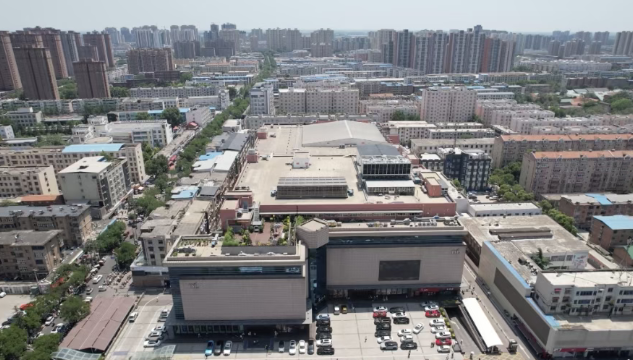The concepts of smart cities, sustainable cities, and smart sustainable cities have become cornerstones of modern urban development, promising efficient, technologically advanced, and environmentally sustainable urban environments. Numerous new city projects are currently being implemented across various countries, aiming to become smart cities, sustainable cities, or a combination of both. However, what challenges do these projects face?
Let’s first define what we mean by a “new city project.” A new city project refers either to the creation of a city from scratch or the comprehensive redevelopment of a large urban area as a unified whole, based on a detailed master plan.
New city projects typically offer both advantages and drawbacks. One advantage is the opportunity to create a city according to a cohesive, forward-thinking plan, often built from the ground up. This approach can help avoid the challenges associated with outdated urban planning, inefficient infrastructure, and other issues commonly found in older cities.
However, building a completely new smart and sustainable city from scratch comes with numerous challenges, ranging from the initial stages of master planning to final execution and long-term operations. While the idea of a city that fully integrates cutting-edge technology, eco-friendly practices, and innovative infrastructure is appealing, it is a complex and resource-intensive undertaking that can encounter significant obstacles along the way.
The complexities of creating new cities: a roadmap of challenges
The implementation of most new city projects faces several key challenges.
1. Sufficient and stable funding. New smart and sustainable cities require massive financial investments, particularly in the early stages when core infrastructure such as utilities, transportation networks, and communication systems are being built. In some cases, projects are abandoned or scaled back due to a lack of funds. Moreover, the initial costs of deploying advanced technologies, such as AI-powered infrastructure or renewable energy grids, can be prohibitively high.

Take, for example, Masdar City in the United Arab Emirates. Initially envisioned as one of the world’s most sustainable cities, powered entirely by renewable energy and built with cutting-edge green technologies, Masdar City faced significant financial hurdles. Located in the desert, it was designed to showcase how cities could operate without relying on fossil fuels. However, the project encountered financial setbacks after the 2008 financial crisis and fluctuating oil prices led to funding cuts. As a result, the original design—featuring a fully sustainable city with thousands of residents—was abandoned. Today, the project is focused primarily on a business district and university campus.
2. Political stability, legislative, and institutional support. Political stability and strong legislative frameworks are crucial for attracting investment and ensuring the successful implementation of urban planning regulations. Political instability or changes in leadership can derail new city projects, particularly in countries where long-term planning is vulnerable to shifts in government priorities. Regulatory hurdles can also slow or prevent the integration of certain technologies, particularly those related to data collection and privacy. Cities must carefully navigate political and regulatory landscapes to avoid delays or abandonment due to bureaucratic challenges.
For instance, the New Cairo project in Egypt—intended as a modern, sustainable alternative to overcrowded Cairo—faced significant political and institutional barriers. During and after the Egyptian Revolution of 2011, political instability led to changes in government leadership, with each administration prioritizing different projects. Shifts in land-use policies, construction permits, and environmental regulations caused significant delays. Furthermore, bureaucratic inefficiencies and the lack of institutional capacity hindered progress. The combination of political instability and inconsistent institutional frameworks severely delayed the development of New Cairo into the smart, sustainable city that was originally envisioned.

3. Infrastructure constraints. Well-established infrastructure—such as roads, water resources, and energy—is essential for the functionality of a new smart or/and sustainable city.
Konza Technopolis, located about 60 km south of Nairobi, was envisioned as a high-tech “Silicon Savannah,” equipped with smart grids, renewable energy sources, and advanced transportation systems. However, the project’s development has been delayed due to inadequate infrastructure, especially in terms of roads, transportation, and energy supply. The initial phase of the project relied heavily on building a robust road network, but progress has been slow due to funding limitations and logistical challenges. Additionally, although the city was designed to be powered by renewable energy sources, the necessary infrastructure to support these systems has not yet been established on a large scale. Water supply also remains a major constraint, as the city requires extensive water sourcing and management systems that have yet to be developed.

4. Attraction of human resources. New cities can only thrive if they attract a sufficient number of residents, businesses, and talent. Convincing people to move to a completely new city is a challenging task. The development of industrial zones to create jobs, as well as social and cultural spaces (e.g., public spaces, cultural institutions, art events), is crucial for attracting residents. Additionally, cultural factors play a role—people may be hesitant to relocate to highly engineered cities that lack organic, historically developed communities.
Songdo, South Korea, is an example of a city that has struggled to attract the expected population. Despite being one of the most ambitious smart city projects in the world, the city faced issues such as high living costs, a lack of social infrastructure (e.g., schools, healthcare, community centers), and limited job opportunities. Initially built with a heavy focus on technology and infrastructure, the master plan for Songdo neglected to address social needs. As a result, the city struggled to build a critical mass of residents and businesses, leading to underutilization of its high-tech infrastructure.

5. Quality of the master plan and subsequent detailed planning: The quality of the master plan and its subsequent detailed planning is critical for the success of new city projects.
Navi Mumbai, envisioned as a smart extension of Mumbai, demonstrates the pitfalls of an overambitious master plan. While the city was designed to incorporate smart technologies and improve living standards, progress has been delayed due to misaligned priorities, bureaucratic hurdles, and underestimation of infrastructure challenges. For example, transportation infrastructure—particularly the integration of Navi Mumbai with Mumbai—has created significant obstacles for residents. The master plan failed to account for the complexity of this integration, leading to slower-than-expected growth and lower-than-anticipated adoption of smart technologies.

There is no single solution to these challenges. However, it is clear that the future of new cities depends on how effectively these issues are addressed and the long-term sustainability of the solutions put in place. This will largely depend on the involvement of various professional experts in urban planning and developing.
In our upcoming publications, we will explore in more detail how new cities are coping with these challenges. The first of these will focus on Ordos.


